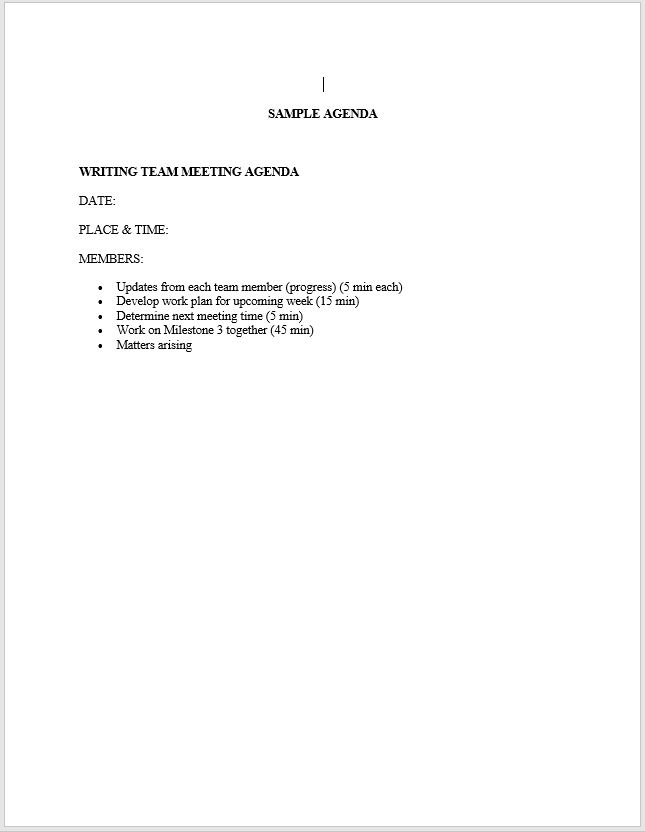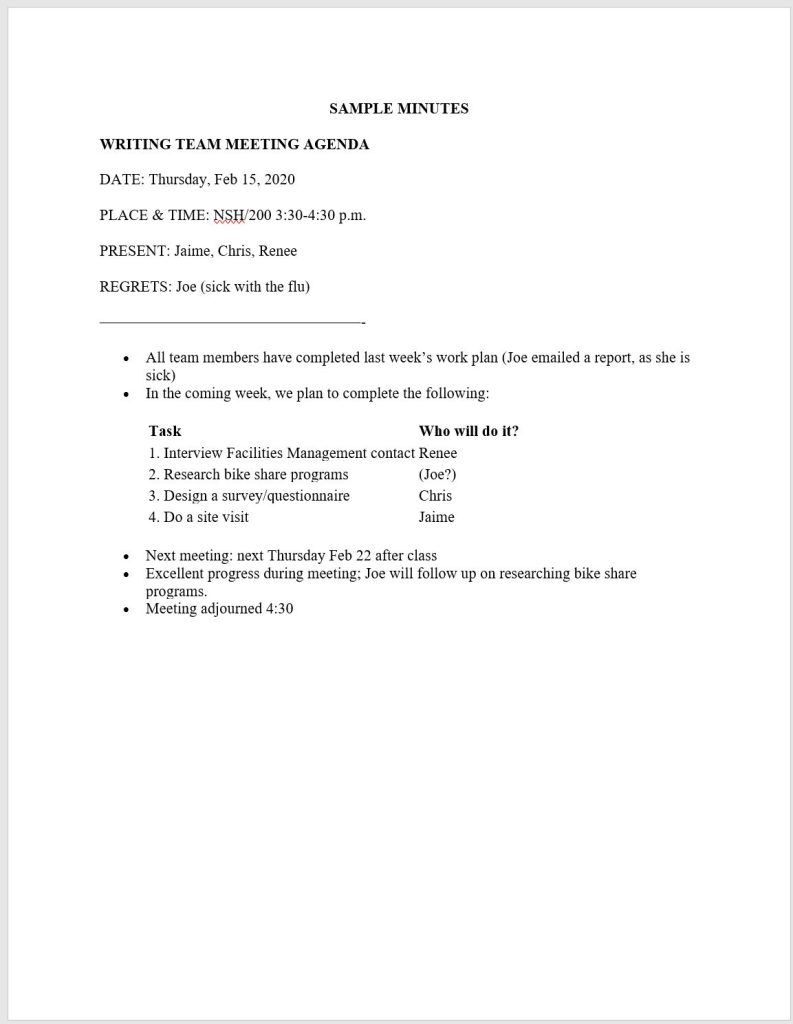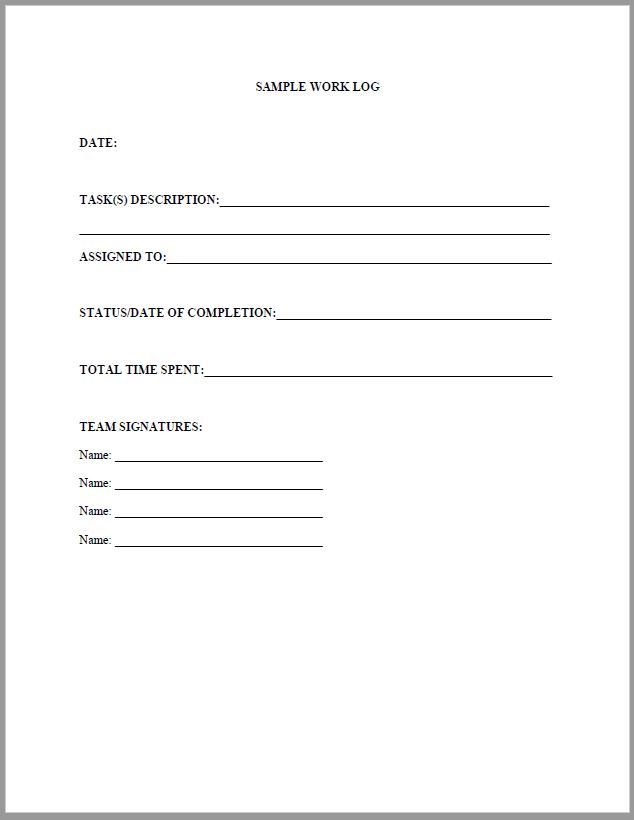Agendas, Minutes & Work Logs
What happens at team meetings should be planned, recorded for future reference, and documented. Agendas, minutes, and work logs are documents that do this. A meeting also should have a chair (the person who keeps things on track) and a recorder or secretary (who records what happened and what decisions were made). Often these roles are rotated so that all team members have a chance to perform all meeting roles.
AGENDAS
Agendas are the plan for what you want to discuss and accomplish at the meeting. It is usually made up of a list of items, sometimes with a time frame for each item.
Figure 5.4.1 is an agenda example:

MINUTES
Minutes follow up on the agenda by recording what decisions were made and what important topics were discussed. One person is responsible for recording the events of the meeting, and distributing the minutes to each member (via email usually). That way, no one should forget what tasks they agreed to complete and when.
Figure 5.4.2 is an example of meeting minutes:

WORK LOGS
Work logs are common documents used in the workplace (and in your collaborative course assignments) to keep track of what work is done, by whom, and how long it took. These can be very helpful for keeping a team on track and ensuring equitable workloads. To ensure accountability, have each team member sign off on the work log.
Figure 5.4.3 is an example of a work log:

Additional Resources
- “Minutes” from the Mayfield Handbook of Technical and Scientific Writing, MIT.edu
- “Agendas” from the Mayfield Handbook of Technical and Scientific Writing, MIT.edu
CHAPTER ATTRIBUTION INFORMATION"Team Project Management Tools & Strategies." Technical Writing Essentials. [License: CC BY 4.0] |

